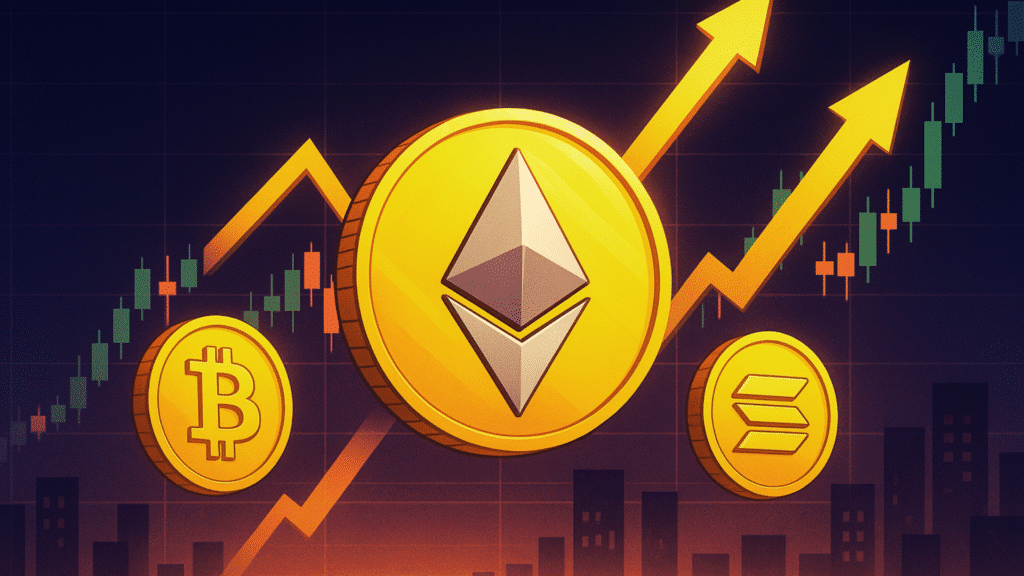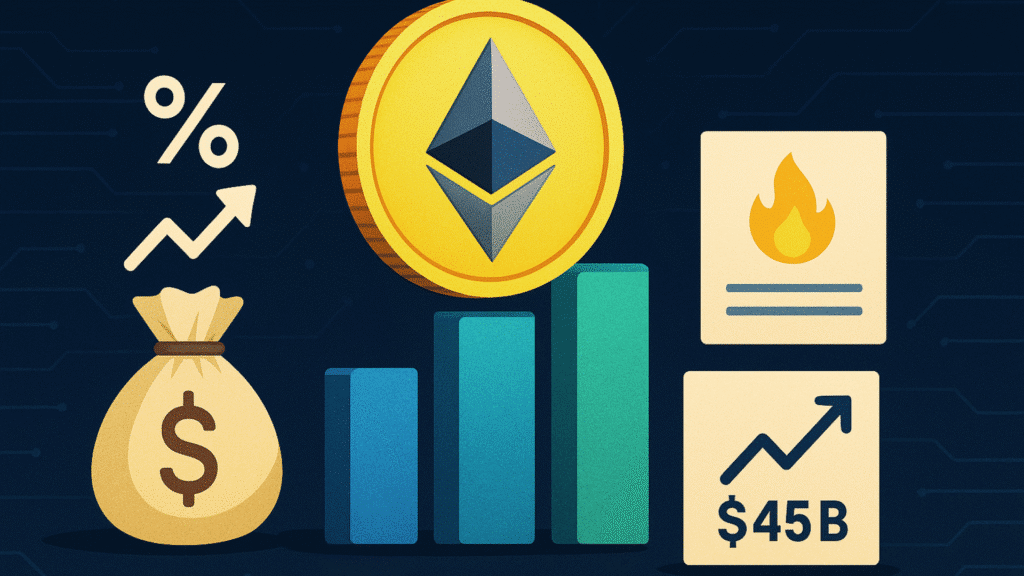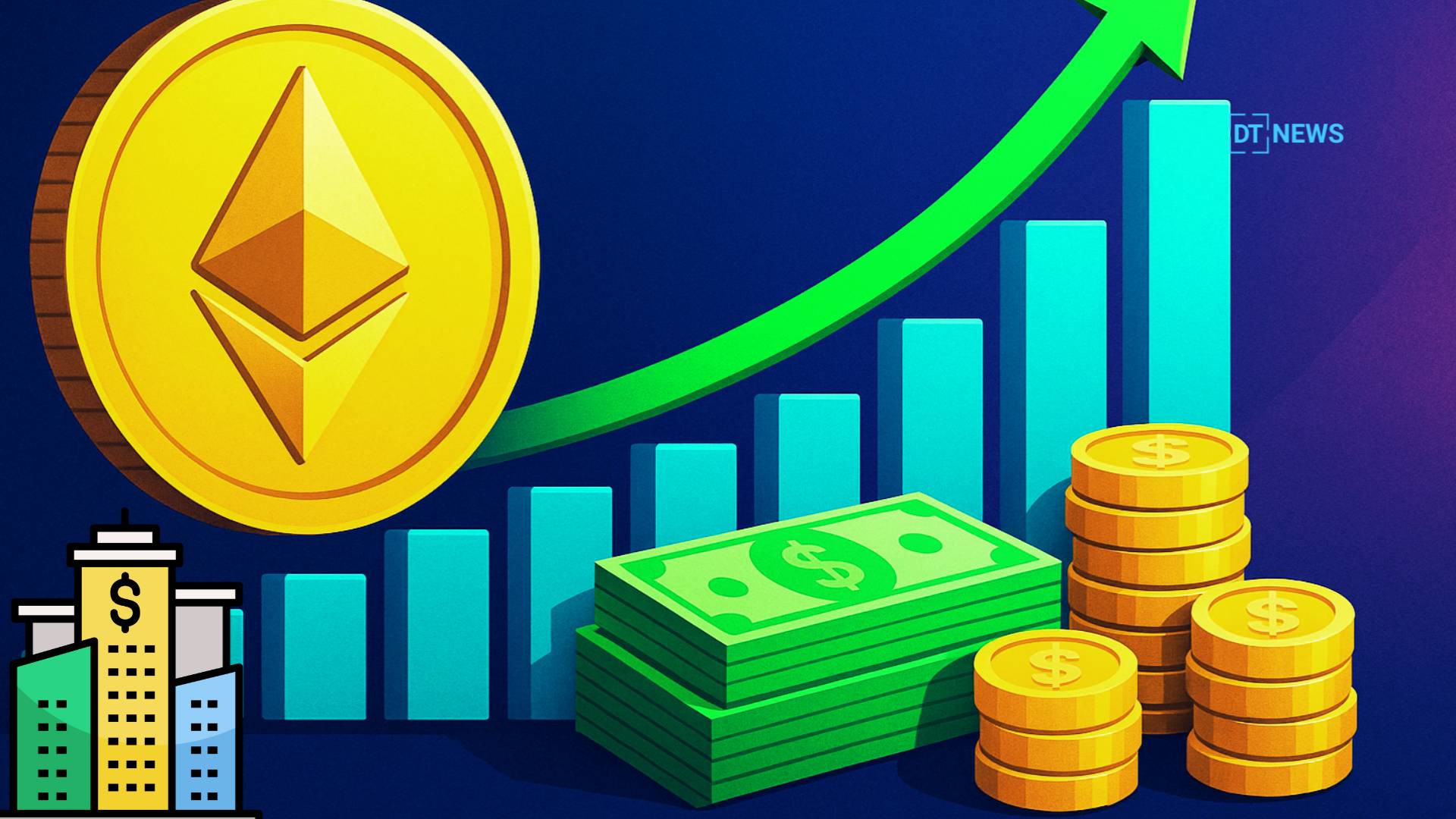According to SoSoValue, Ethereum ETF inflows reached a record $727 million, marking the largest single-day total since the category’s launch. This jump was driven by strong interest from large investors, highlighting how traditional finance is starting to adopt blockchain-based assets.
- What Drove Ethereum ETF Inflows to a New Peak?
- How Does BlackRock’s Role Impact the Ethereum ETF Market?
- Is the Redemption Pressure from Early ETF Launches Finally Over?
- What Macro Factors Are Supporting Ethereum’s Momentum?
- Conclusion
- FAQs
- 1. How much did Ethereum ETF inflows total in a day?
- 2. Which Ethereum ETF saw the highest daily inflow?
- 3. How much did Fidelity’s Ethereum ETF attract?
- 4. What was Ethereum’s price change during the inflow surge?
- 5. What’s the staking reward range for Ethereum?
- 6. Which ETF has the highest cumulative inflows?
- Glossary
The biggest contributions came from BlackRock’s ETHA and Fidelity’s FETH, showing increased trust in Ethereum’s long-term potential.
Ethereum surged past $3,300 amid record ETF inflows, outpacing gains in Bitcoin and Solana. The remarkable rally marks a turning point for institutional interest in Ethereum and comes as ongoing network progress fuels optimism for digital assets in 2025.
What Drove Ethereum ETF Inflows to a New Peak?
The record-breaking Ethereum ETF inflows were mainly driven by strong market conditions and the growing interest of big investors. Ethereum’s price moved above $3,200 with a 6.8% gain in one day, outperforming both Bitcoin and Solana.

BlackRock’s ETHA saw $499 million in inflows, and Fidelity’s FETH brought in $113 million, raising the total value of all Ethereum ETFs to $16.41 billion.
Industry analysts believe the surge in Ethereum ETF inflows goes beyond short-term price action. It signals strong interest from major institutions.
“This isn’t small retail activity,” said crypto strategist David Lee. “The large inflow numbers prove that traditional investment firms now consider Ethereum a key piece of their overall portfolio strategy.”
How Does BlackRock’s Role Impact the Ethereum ETF Market?
BlackRock’s ETHA has become the leading fund in the Ethereum ETF inflows market. With $499 million added in a single day, its total inflows have reached $7.11 billion.
The fund holds 1.90% of all Ethereum in circulation, securing its spot as a top player among Ethereum ETFs.Market analysts say BlackRock’s large-scale buying is strategic.
Jamie Elkaleh, CMO of Bitget Wallet, stated, “BlackRock sees Ethereum as more than a risky crypto; it’s becoming the base layer for future financial systems. Their investment reflects that belief.”
These Ethereum ETF inflows show that Ethereum is now seen as more than just a digital currency; it’s now seen as an income-generating asset with real use cases in DeFi, NFTs, and tokenized real-world assets.
| ETF Provider | Ticker | Daily Inflow (Million) |
| BlackRock | ETHA | $499.25 |
| Fidelity | FETH | $113.31 |
| Bitwise | ETHW | $14.45 |
| Grayscale | ETHE | $33.04 |
| VanEck | ETHV | $3.69 |
| Franklin | EZET | $5.10 |
| Invesco | ETHZ | $3.72 |
Is the Redemption Pressure from Early ETF Launches Finally Over?
Grayscale’s ETHE faced a lot of withdrawals after it changed from a trust to an ETF. But now, it’s seeing improvement with $33 million flowing in. Experts see this as an important shift.
The shift from heavy redemptions to steady Ethereum ETF inflows across major funds suggests that investor confidence is starting to return.
The pressure from earlier withdrawals is now behind us,” said Olivia Parsons, a senior ETF analyst at Summit Investments. “The money coming in now looks natural; it’s not just quick trades, but long-term investments.”
This change in sentiment is clear from the wide participation in Ethereum ETF inflows, showing that it’s not just one fund seeing interest, but many.
What Macro Factors Are Supporting Ethereum’s Momentum?
Beyond ETF demand, several macro factors are also supporting Ethereum. Its staking rewards, which range from 4% to 6%, give investors a steady income.

Additionally, Ethereum’s supply is shrinking due to changes made through EIP-1559, which is starting to show real effects.
Open interest in Ethereum futures has jumped to $45 billion, rising 60% since late June. This shows that big investors aren’t just buying spot ETFs but are also increasing their positions using futures contracts.
Together, all these signs support the steady Ethereum ETF inflows, showing that Ethereum is becoming both a way to earn passive income and a strong investment opportunity.
Conclusion
Based on the latest research, Ethereum ETF inflows are showing how crypto is becoming part of traditional finance. The $727 million in new investments from major firms like BlackRock and Fidelity shows that big investors now see Ethereum as more than just a risky asset; they see it as an important part of future financial systems.
As Ethereum ETF inflows continue to grow and redemption pressures fade, Ethereum is in a strong position to expand its role in both crypto and traditional finance.
Summary
Ethereum ETF inflows reached a record $727 million, which shows that large investors are putting more trust in Ethereum. BlackRock’s fund added the most, bringing in $499 million, while Fidelity added $113 million.
Experts think this isn’t just a short-term move, but a sign that interest in Ethereum will last. With staking rewards of 4–6% and rising futures activity, Ethereum is now viewed as both a way to earn income and a tool for building future financial systems.
Stay updated for real-time insights on Ethereum ETF inflows and what’s driving institutional demand across the crypto space.
FAQs
1. How much did Ethereum ETF inflows total in a day?
$726.74 million.
2. Which Ethereum ETF saw the highest daily inflow?
BlackRock’s ETHA with $499.25 million.
3. How much did Fidelity’s Ethereum ETF attract?
$113.31 million.
4. What was Ethereum’s price change during the inflow surge?
It rose 6.8% and crossed $3,200.
5. What’s the staking reward range for Ethereum?
Between 4% and 6%.
6. Which ETF has the highest cumulative inflows?
BlackRock’s ETHA with $7.11 billion.
Glossary
ETHA – BlackRock’s spot Ethereum ETF, now the market leader in ETH inflows.
FETH – Fidelity’s Ethereum ETF that attracted over $100M during the recent surge.
ETHE – Former Ethereum trust now converted to ETF; recovering from past outflows.
Redemptions – Investor withdrawals from ETFs; previously high in ETHE, now declining.
Staking Rewards – Passive income earned by locking Ethereum to help secure the network.
Open Interest – Total value of active Ethereum futures contracts, showing market speculation level.
EIP-1559 – Ethereum upgrade that reduces ETH supply via transaction fee burns.



















































































































